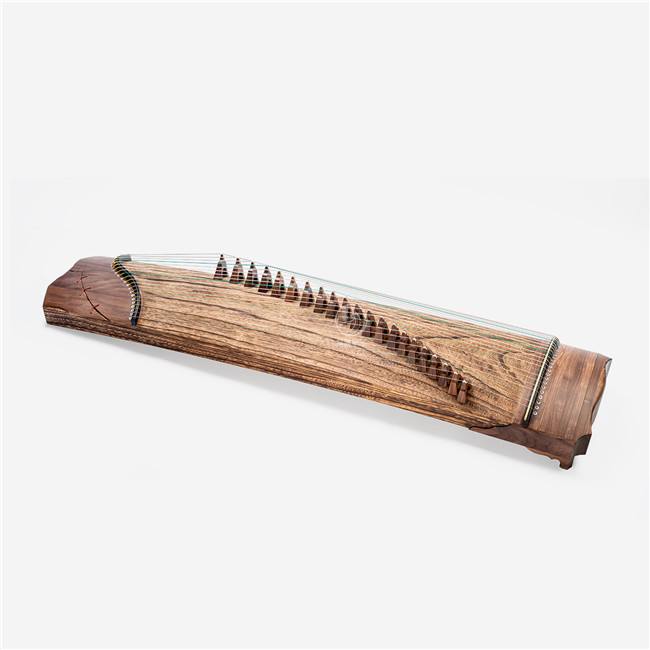Structure of Gayageum
Gaya Gum, according to legend, was made by King Gyase of Gaya country after imitating the zheng. The shape is similar to that of the zheng. The ancient Gayageum, the body of which is cut with a single wood into a groove, the tail is horn-shaped, and no bottom plate is added, so the volume is small and lacks expressiveness; the Gayageum used by the Korean people today, It is made after many centuries of improvement and absorption of the advantages of other ethnic instruments.
Gayageum consists of a frame, a top, a bottom, a post, and strings.
The length of the piano is about 152 cm and the width is 17-21 cm. The frame is a rectangular frame, with the head on the right and the tail on the left. The upper Simon is made of an arched thin water top, which is made of fine-grained pine grown in Changbai Mountain, fish scale pine or sycamore wood that is easy to vibrate.
The bottom of the piano has a soleplate and feet, and the soleplate is made of chestnut wood.
The frame and column are made of hard wood such as mahogany or rosewood. There is a raised Yueshan branch at one end of the head, and there are 13 strings.

Gayageum consists of three parts: the sound box, the strings, and the bridge.
The sound box is 150 cm long, 25 cm wide and 5 cm thick in the middle. The material is made of plane tree board and birch board respectively.
The strings are made of silk. There are 13 strings in total, the two ends of the strings are fixed on the head and tail respectively, and there is a nut on the head. The 13 strings are supported by a code post, and the headstock can be moved left and right to adjust the scale.
Gayageum is a folk musical instrument that is good at expressing the soft emotions of the nation. Therefore, Gayagum playing and singing is a form of performance that people of all ethnic groups enjoy.
 渝公网安备 50010702504639号
渝公网安备 50010702504639号